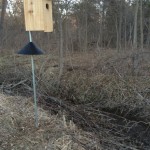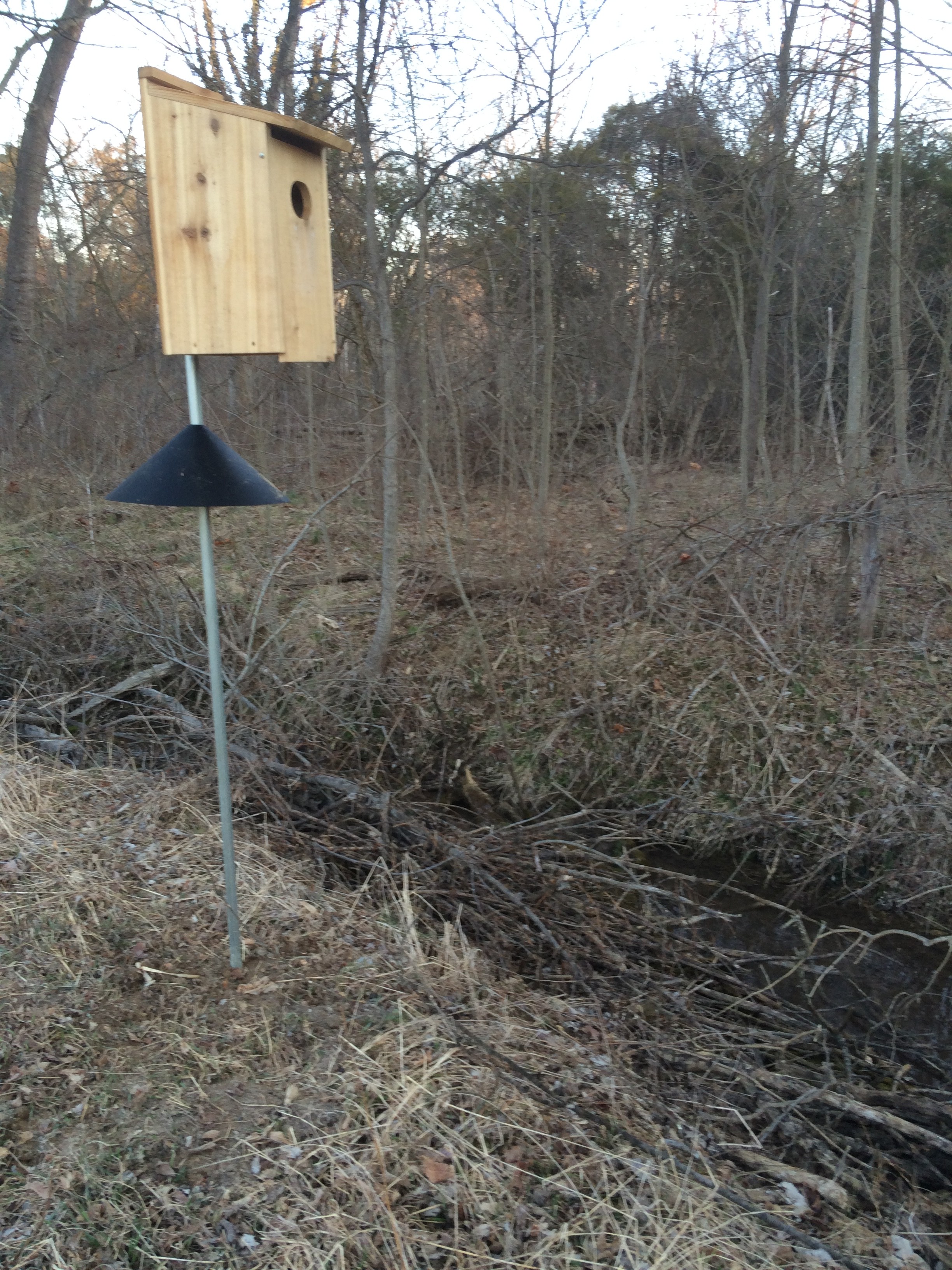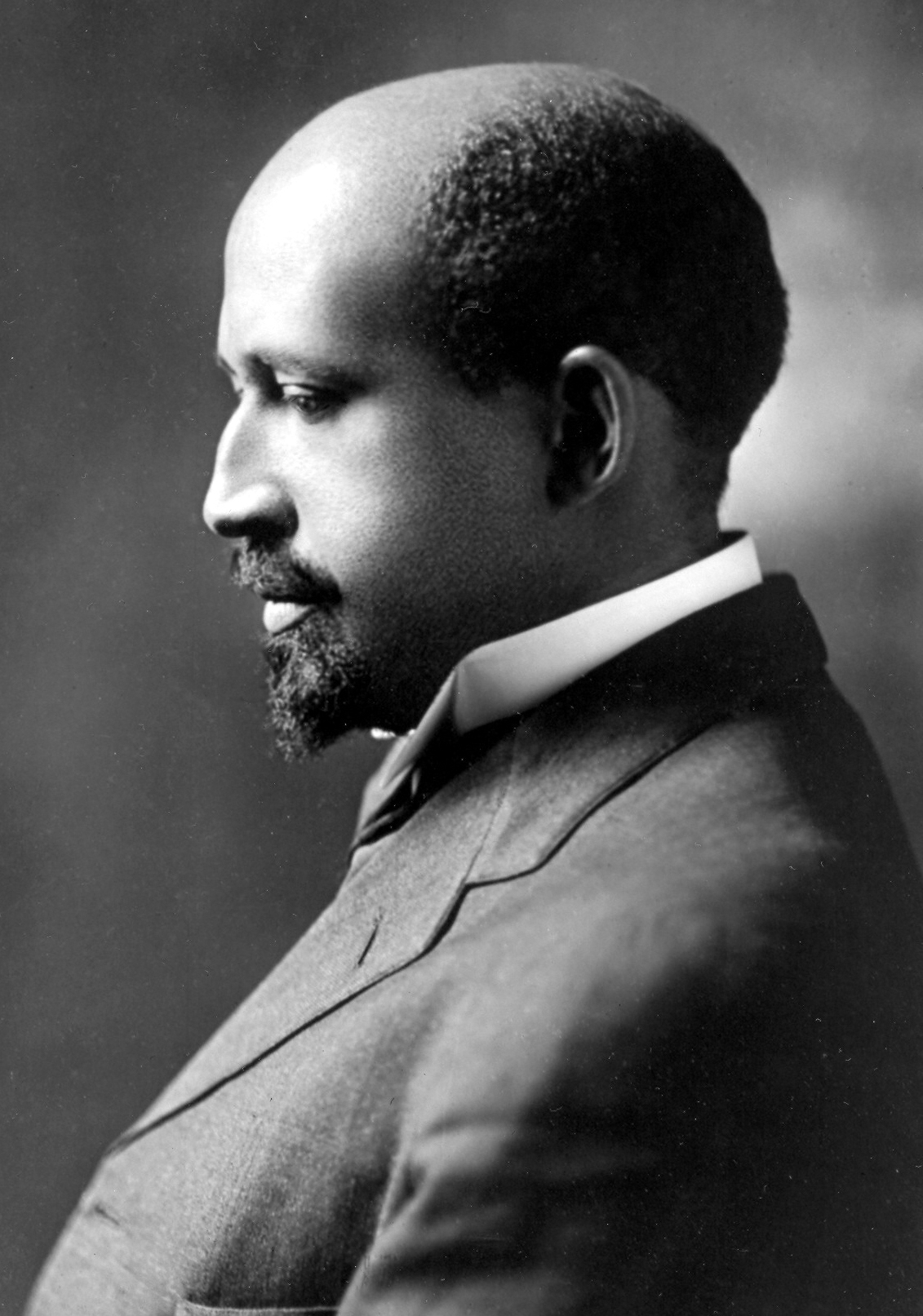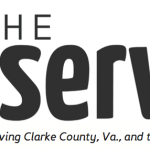Time To Set Up Homes For Cavity Nesting Birds
 By Doug Pifer
By Doug Pifer
Many native birds nest in natural tree cavities or old woodpecker nest holes. But man-made nest boxes are beneficial for cavity nesting bird species whose numbers are declining. This is a great way for a family or youth group to get involved in serious wildlife conservation!
My wife and I have kept houses for bluebirds and purple martins for many years. Now that we have a farm with a stream, some nearby woods and much more open space, we’ve expanded our list of prospective tenants to include wood ducks and American kestrels.
Last fall I put up a bluebird box in what looked like an ideal spot, with plenty of open space around it. I installed a cylindrical baffle around the 4 1/2-foot metal post supporting the house to discourage snakes, cats, raccoons and other predators. All winter, bluebirds often perched on that house and looked inside.
In February I attached four more bluebird houses to various fence posts throughout the farm. I spaced them at least 50 yards from each other, with their 1 1/2-inch entrance holes facing southeast or east, away from prevailing winds. In the last few weeks the local bluebirds have been fighting over the new boxes, even tumbling around on the ground. To learn more about attracting bluebirds, look up the North American Bluebird society (www.nabluebirdsociety.org).
On March 7 I put up a new, lightweight aluminum martin house. I’ve had bad luck attracting martins in the past, but this seems to be the perfect site. It’s surrounded by an acre of treeless open space, is about 30 feet from the house, and has access to open water nearby (see location tips at www.purplemartin.org). Its eight nesting chambers have semicircular openings designed to exclude starlings. I added three of my hand-carved purple martin decoys, and I’m hoping for success this time! Right now the bluebirds are perching on the heads of our martin decoys!
Next day I put up a wood duck box beside the bank of the stream that enters Rocky Marsh Run, where I’ve seen wood ducks swimming. I followed the wood duck society’s instructions (www.woodducksociety.com) and mounted a circular predator guard on the 1 1/2- inch electrical conduit pipe below the nest box. Wood ducks naturally nest in tree cavities along streams and are attracted to custom-made nest boxes. The day after hatching, intrepid wood ducklings climb up the inside of the box and spring out of the entrance at their mother’s call. They land lightly on land or water and scamper to join her.
I also put up a nest box for American kestrels in the hayfield. It has an oval entrance 3 inches in diameter, mounted on an 18-foot telescoping pole. Kestrels are the smallest American falcons. Often seen perched on utility wires along the roadside or in open fields, kestrels hunt for mice and grasshoppers. They prefer to nest in lofty tree cavities that face open fields and are attracted to the proper housing (see Cornell University’s www.nestwatch.org). So far, we haven’t had any kestrels, but the bluebirds keep perching on it and looking inside.
In the next weeks, more cavity-nesting birds will be seeking homes. It’s exciting to watch for them!















